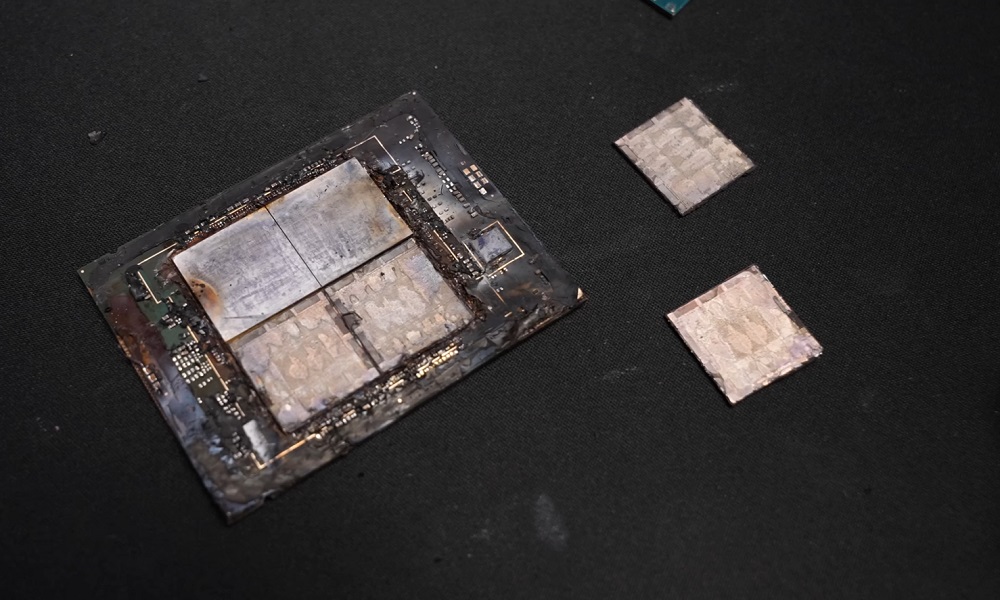
The well-known overclocker “Der8auer” has obtained an Intel Sapphire Rapids series processor, that is, the next generation of high-performance Xeon processors from the chip giant, and faced with the impossibility of finding a motherboard to be able to make it work, has chosen to carry out a «delid» complete which, obviously, has left it totally unusable.
Deliding a processor means open the encapsulation in which the silicon wafers are located. It is a complicated process, since you have to “break” the seal that the IHS (integrated heat spreader) brings, and that in this type of processor is usually done by welding. In the images that “Der8auer” has shared, you can see the process of opening the chip, and the truth is that it is quite impressive.
The Intel Sapphire Rapids processor that you have opened has a total of four interconnected silicon chips inside, and the truth is that the contact surface is quite large. Each of the four chiplets (those four silicon wafers) has a total of 15 cores, since the space that core 16 would occupy is reserved for the memory controller. However, Intel would have chosen to offer only configurations with 14 active cores per chiplet to better fine-tune the supply-to-hit-rate relationship per wafer.
It is not a complicated subject to understand, each chiplet comes out of a silicon wafer and is subject to a process that does not always complete with absolute success, that is, if you try to make a chip with 16 cores it will not always exit with all cores active. By reducing the core level to 14, Intel would have better matched the actual hit rate per wafer it could get with those new chiplets. This fits with the information that we had seen previously, in which we told you that Intel will offer up to 56 cores and 112 threads per CPU with this new generation.
There will be two versions of the Intel Sapphire Rapids processors, one standard and the other with HMB2E memory, whose capacity will be at least 16 GB per block, which would leave us with a maximum configuration of 64GB of HBM2E memory. Obviously, the inclusion of this memory will make the versions of the Intel Sapphire Rapids with HBM2E much larger than the standard versions. Its launch is expected to take place this year, but we don’t have an exact date yet.



